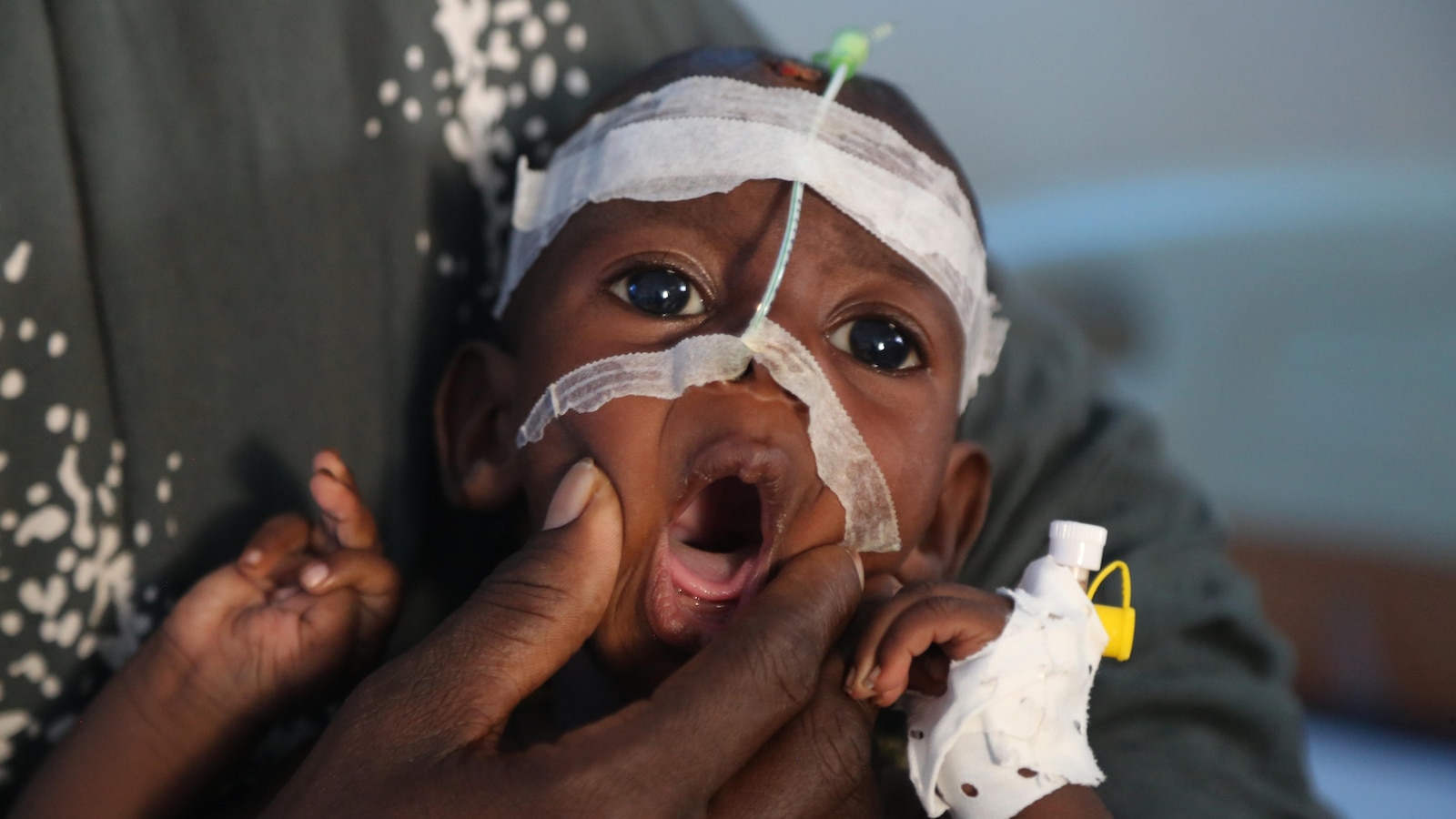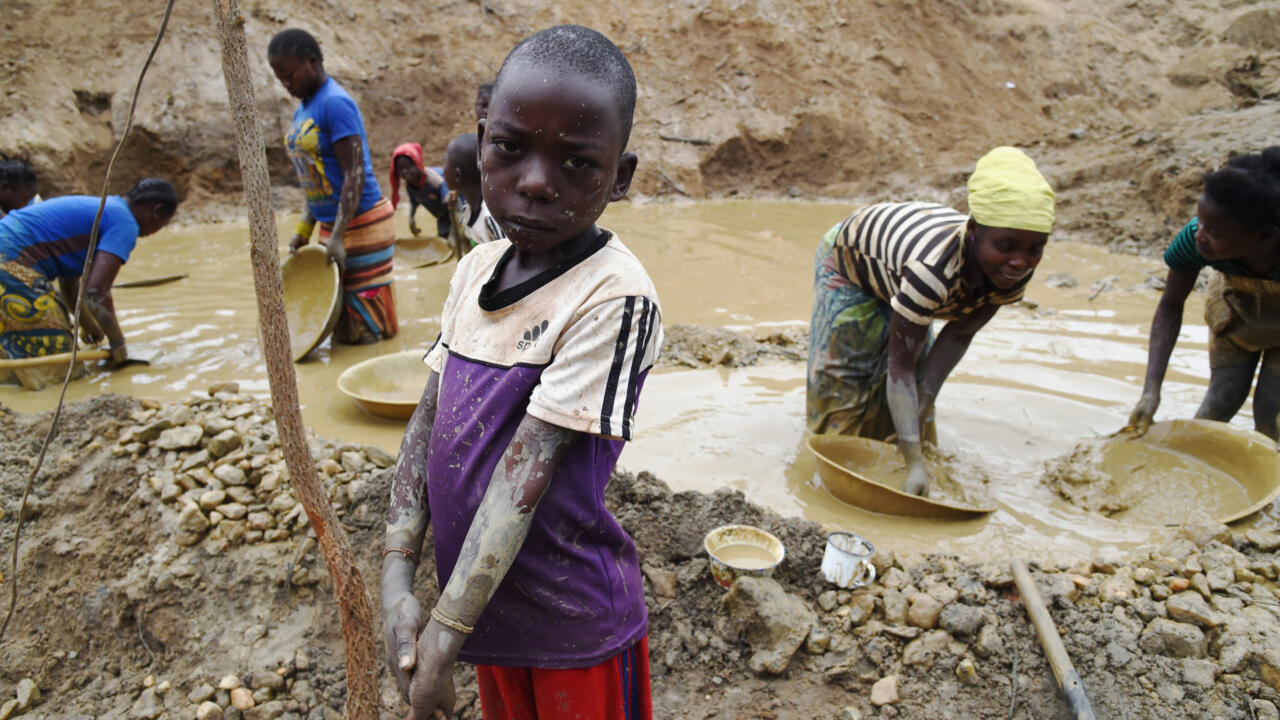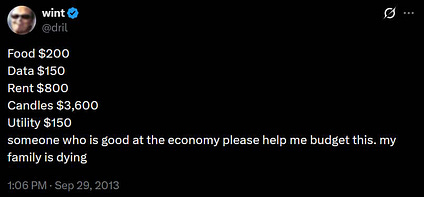A visit to Somalia’s crumbling hospitals shows the toll of aid cuts and war – ABC News

Report on Somalia’s Healthcare Crisis and its Impact on Sustainable Development Goals
Executive Summary
Somalia’s healthcare system is in a state of severe crisis, characterized by a lack of access, inadequate government funding, and a heavy dependency on volatile international aid. This situation directly impedes the nation’s progress towards several key Sustainable Development Goals (SDGs), particularly SDG 3 (Good Health and Well-being), SDG 2 (Zero Hunger), and SDG 16 (Peace, Justice and Strong Institutions). The recent withdrawal of significant funding from the U.S. Agency for International Development (USAID) has exacerbated these challenges, threatening the collapse of essential health services.
Undermining Good Health and Well-being (SDG 3)
Critical Gaps in Healthcare Access and Infrastructure
A significant portion of the Somali population, especially in rural areas, lacks access to basic healthcare facilities. This forces citizens, such as farmer Yusuf Bulle with his malnourished son, to undertake long and often perilous journeys to the capital, Mogadishu, to receive care. The few functioning public hospitals, like Banadir and De Martino, are overwhelmed and serve as the only hope for many, highlighting a failure to ensure universal health coverage.
Impact of Aid Reduction on Health Services
The withdrawal of USAID funding has had a direct and devastating impact on the healthcare system’s capacity. Key consequences that directly contravene the objectives of SDG 3 include:
- The loss of employment for over 6,000 health workers.
- Negative operational impacts on up to 2,000 health facilities.
- The degradation of specialized units, such as the malnutrition ward at Banadir Hospital, which lost 37 staff members and now depends entirely on other humanitarian groups like Concern Worldwide for salaries and supplies.
Resurgence of Preventable Diseases
Insecurity and fear of militant attacks are preventing parents from accessing routine vaccinations for their children. This has led to the spread of preventable infectious diseases, such as diphtheria, placing further strain on already fragile health facilities and representing a significant setback for public health targets within SDG 3.
Broader Impediments to Sustainable Development
Exacerbating Poverty and Hunger (SDG 1 & SDG 2)
The healthcare crisis is intrinsically linked to the goals of No Poverty (SDG 1) and Zero Hunger (SDG 2). The prevalence of severe malnutrition, as seen in the case of the 3-year-old child at Banadir Hospital, underscores the failure to achieve food security. Lack of free and accessible healthcare forces impoverished families to forego treatment, perpetuating the cycle of poverty and ill-health.
Weak Institutions and Security Prioritization (SDG 16)
The Somali government’s primary focus on its military campaign against al-Shabab has resulted in the neglect of essential public services, undermining the goal of building effective and accountable institutions (SDG 16). Despite a national budget exceeding $1 billion, the Ministry of Health’s allocation is minimal and largely tied to donor-backed projects. Experts note the absence of a coherent “national health care plan,” reflecting a critical weakness in governance.
The Fragility of Partnerships for the Goals (SDG 17)
Over-Reliance on International Partners
Somalia’s public health sector is almost entirely sustained through international partnerships, a cornerstone of SDG 17. However, this reliance is unsustainable. Key contributors funding everything from staff salaries to medical equipment include:
- The United Nations
- Concern Worldwide
- International Rescue Committee (IRC)
- Population Services International (PSI)
- The Government of Turkey
The Peril of Donor Fatigue and Shifting Priorities
The abrupt cuts in USAID funding demonstrate the vulnerability of a system built on external aid. Hospital administrators express grave concern over “donor fatigue” and the potential expiration of contracts with humanitarian groups, which would lead to a cessation of services. This dependency, without a sustainable national strategy, undermines the long-term viability of the healthcare system and the principle of resilient partnerships.
Government Response and Future Outlook
The Somali government has stated it is developing a “contingency plan” with remaining partners, though details remain unspecified. While there is hope among hospital staff that the Ministry of Health will assume responsibility if international partners withdraw, this is contrasted by expert analysis indicating that government budgets are not structured to support these services independently. Achieving the SDGs will require a fundamental shift in national priorities toward building a resilient and self-sufficient public health system.
Analysis of Sustainable Development Goals in the Article
1. Which SDGs are addressed or connected to the issues highlighted in the article?
The article on Somalia’s healthcare crisis touches upon several interconnected Sustainable Development Goals (SDGs). The analysis reveals connections to the following goals:
- SDG 2: Zero Hunger: The article explicitly mentions severe child malnutrition, a core issue addressed by this goal.
- SDG 3: Good Health and Well-being: This is the central theme of the article, which details the collapse of the healthcare system, lack of access to medical facilities, loss of health workers, and the spread of preventable diseases.
- SDG 16: Peace, Justice and Strong Institutions: The article highlights how the government’s focus on security and conflict (fighting al-Shabab) undermines public services like healthcare, pointing to issues with institutional capacity and governance.
- SDG 17: Partnerships for the Goals: The critical role of international aid and the devastating impact of its withdrawal are discussed at length, emphasizing the importance and fragility of global partnerships for development.
2. What specific targets under those SDGs can be identified based on the article’s content?
Based on the issues discussed, several specific SDG targets can be identified:
- Under SDG 2 (Zero Hunger):
- Target 2.2: End all forms of malnutrition. The article’s opening story of a “badly malnourished 3-year-old son” and the mention of a hospital unit that “depends entirely on donor funds” to look after malnourished children directly relate to this target.
- Under SDG 3 (Good Health and Well-being):
- Target 3.2: End preventable deaths of newborns and children under 5 years of age. The cases of severe malnutrition and the spread of diphtheria, a vaccine-preventable disease, among children highlight failures in achieving this target.
- Target 3.3: End the epidemics of… communicable diseases. The article notes that diphtheria, an “infectious disease of the throat preventable by vaccination,” is “now spreading in rural areas.”
- Target 3.8: Achieve universal health coverage, including financial risk protection and access to quality essential health-care services. The article illustrates a complete lack of universal health coverage, citing that in many areas “there is no hospital,” people must travel far for care, and rely on free services because they are jobless. The lack of routine vaccinations further underscores this gap.
- Target 3.c: Substantially increase health financing and the recruitment, development… and retention of the health workforce. The article provides stark evidence of regression on this target, stating that U.S. aid cuts led to “over 6,000 health workers losing their jobs” and affected “up to 2,000 health facilities.” It also notes the government’s low health budget, which is highly dependent on donors.
- Under SDG 16 (Peace, Justice and Strong Institutions):
- Target 16.6: Develop effective, accountable and transparent institutions at all levels. The article suggests institutional failure, quoting a lawmaker who says the government’s priorities are “deficient” and that “There is no national health care plan.” The government’s inability to fund its own health system, which is “heavily dependent on donor money,” points to weak national institutions.
- Under SDG 17 (Partnerships for the Goals):
- Target 17.2: Developed countries to implement fully their official development assistance commitments. The article’s main premise is the crisis “exacerbated by the Trump administration’s dismantling of the U.S. Agency for International Development this year,” which represents a failure to maintain development assistance.
3. Are there any indicators mentioned or implied in the article that can be used to measure progress towards the identified targets?
Yes, the article contains several quantitative and qualitative indicators that can be used to measure progress (or lack thereof) towards the identified targets:
- Indicator for Target 2.2 (Malnutrition): The existence of specialized hospital units for malnourished children, such as the one at Banadir Hospital, serves as a qualitative indicator of the prevalence and severity of malnutrition.
- Indicator for Target 3.3 (Communicable Diseases): The reported spread of diphtheria in rural areas is a direct indicator of a failure to control vaccine-preventable diseases.
- Indicators for Target 3.8 (Universal Health Coverage):
- Geographic accessibility of healthcare: The statement, “Where I come from, there is no hospital,” indicates a lack of physical access to health facilities.
- Financial accessibility: The fact that a patient went to a hospital because she “knew she would not be asked for money” and was told “there is free medication” indicates a high need for financial risk protection that the state is not providing.
- Vaccination coverage: The observation that “Parents are not taking their kids for routine vaccinations because they are afraid of militant attacks” implies low vaccination rates.
- Indicators for Target 3.c (Health Financing and Workforce):
- Number of health workers: The specific figure of “over 6,000 health workers losing their jobs.”
- Number of health facilities: The report that “up to 2,000 health facilities were affected” by funding cuts.
- Government health expenditure: The national health budget allocation figures of “$91 million” this year versus “$52 million” last year, with the crucial context that “almost all of that increase came from donors.”
- Indicator for Target 16.6 (Effective Institutions): The explicit statement that “There is no national health care plan” serves as a clear indicator of a lack of effective institutional planning and governance in the health sector.
- Indicator for Target 17.2 (Development Assistance): The “loss of USAID funding” is a direct negative indicator related to the fulfillment of official development assistance commitments by a developed country.
4. Table of SDGs, Targets, and Indicators
| SDGs | Targets | Indicators Identified in the Article |
|---|---|---|
| SDG 2: Zero Hunger | 2.2: End all forms of malnutrition. | The case of a “badly malnourished 3-year-old son”; existence of a hospital unit dedicated to malnourished children. |
| SDG 3: Good Health and Well-being | 3.2: End preventable deaths of children under 5. | Children suffering from severe malnutrition and diphtheria. |
| 3.3: End epidemics of communicable diseases. | The spread of diphtheria, a vaccine-preventable disease, in rural areas. | |
| 3.8: Achieve universal health coverage. | Lack of hospitals in remote areas; patients needing free medical services; low routine vaccination rates due to insecurity. | |
| 3.c: Increase health financing and health workforce. | Loss of over 6,000 health workers; 2,000 health facilities affected by cuts; national health budget is heavily dependent on donor funds. | |
| SDG 16: Peace, Justice and Strong Institutions | 16.6: Develop effective, accountable institutions. | The explicit statement that “There is no national health care plan”; government priorities described as “deficient” due to focus on security over public services. |
| SDG 17: Partnerships for the Goals | 17.2: Developed countries to implement ODA commitments. | The “dismantling of the U.S. Agency for International Development” and the resulting loss of funding for Somalia’s health sector. |
Source: abcnews.go.com
What is Your Reaction?
 Like
0
Like
0
 Dislike
0
Dislike
0
 Love
0
Love
0
 Funny
0
Funny
0
 Angry
0
Angry
0
 Sad
0
Sad
0
 Wow
0
Wow
0



















































.jpg.webp?itok=0ZsAnae9#)

























